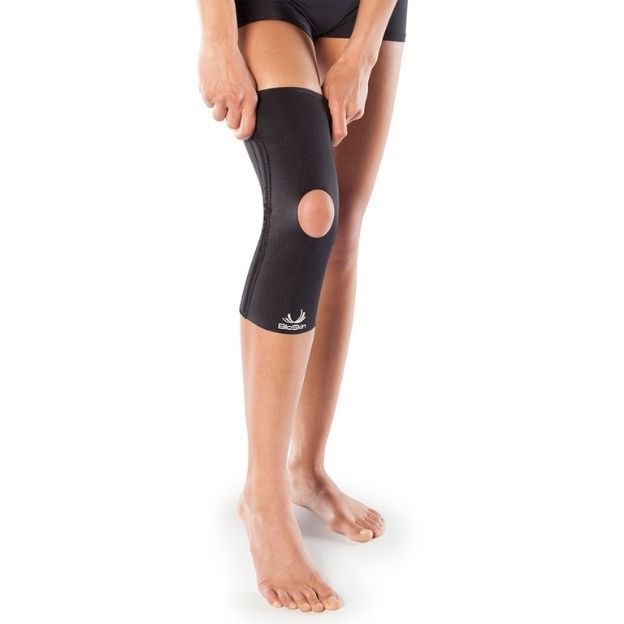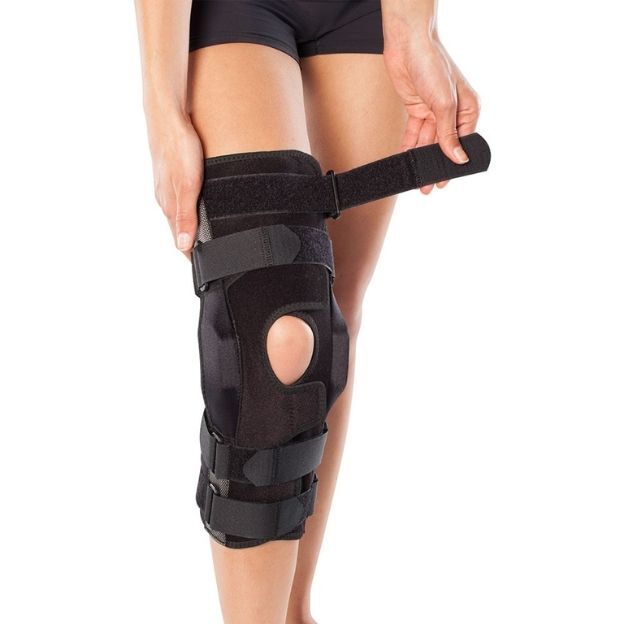The ACL plays a crucial role in keeping the knee joint stable during cutting, pivoting, and sudden stops.
When the ligament is injured or weakened, it can cause instability, pain, and hesitation with movement. That's where the right ACL knee support makes a difference. While it won't heal the ligament, it provides stability and comfort so you can move more confidently through daily activities or during recovery.
We're Bioskin, and today we'll discuss ACL injuries and how to support them.
How ACL Knee Braces Help
Stability
Hinged ACL knee braces are designed to provide dependable knee stability by limiting risky side-to-side motion that stresses the anterior cruciate ligament (ACL). This protection is especially important after ACL injuries, ligament injuries, or a torn ACL, where the knee joint is more vulnerable to instability.
By controlling movement while still allowing natural flexion and extension, a hinged ACL knee brace helps patients and athletes move with greater confidence and lowers the risk of further injury.
Compression
Consistent compression helps manage swelling, supports circulation, and reduces stiffness. For an injured knee recovering from ACL tears, meniscus tears, or even post-ACL reconstruction, compression plays a big role in reducing pain and discomfort.
It also supports the rehabilitation process by promoting blood flow and helping the affected leg maintain a healthier range of motion during physical therapy and recovery.
Comfort and design
Modern ACL braces are built with lightweight and hypoallergenic materials that make it easier to wear for long periods without bulk or overheating. Adjustable straps and easy application options ensure a secure fit across the femur, tibia, and patella, while allowing functional motion.
Unlike older rigid braces, these designs balance stability with comfort so you can go about everyday activities, sports, or even targeted rehab without sacrificing mobility.
Choosing the Best ACL Knee Support by Need
Every day support and swelling management

A Knee Compression Sleeve delivers medical-grade compression to ease knee pain, soreness, and post-activity swelling. It's a simple option for daily use, designed to reduce strain on the knee joint and help the affected leg stay comfortable during recovery.
Instability or ACL strain (non-surgical)

For people dealing with ACL injuries or mild instability, the Bodyguard Wraparound is a hinged brace that provides dependable knee stability. Its design limits risky motion that stresses the anterior cruciate ligament while still allowing a natural range of motion in the sagittal plane. This makes it a strong choice for conservative treatment of partial tears or for injury prevention in high-demand sports.
Post-injury or post-surgical recovery
When recovering from ACL surgery or more significant knee injuries, the Bodyguard Wraparound is the right choice. Its durable hinge system helps stabilize the tibia and femur to reduce unwanted movement and protecting the joint during healing. This level of support is especially valuable for ACL-deficient knees or after ACL reconstruction when the joint requires extra protection.
Active lifestyles (returning to movement)
Lightweight hinged knee braces give athletes and active individuals confidence as they return to basketball, running, or other sports. These braces balance stability with flexibility to help prevent injury and reduce the risk of re-injury without restricting natural motion. With adjustable straps, they're easy to fit securely and comfortably, even during demanding activities.
Get the Right Fit From the Start
A brace can only provide reliable knee stability if it fits correctly. Start by measuring your leg carefully according to the BioSkin sizing chart so the brace matches your exact dimensions. An accurate fit ensures the knee joint gets the right level of support without added pressure or discomfort.
Wraparound braces are useful if you're dealing with fluctuating swelling after ACL injuries, since they can be adjusted more easily throughout the day. A pull-on design, on the other hand, offers a lower-profile look and is often more streamlined under clothing.
Once your brace is on, it should feel snug, not overly tight. Proper brace usage means secure enough to provide support and keep the injured knee stable, but never so tight that it cuts off circulation or leaves red marks. A good fit should relieve discomfort, reduce strain, and make rehabilitation or daily movement easier.
How We Can Help
Our line of ACL knee supports is built with lightweight, breathable materials and adjustable straps that make it easy to get a secure, comfortable fit. Every brace delivers medical-grade compression and dependable stability, which are perfect for when you're managing an injured knee, recovering after surgery, or just looking for extra protection to stay active.
Explore our ACL collection today to find the brace that fits your lifestyle, your activity level, and your recovery goals.
Frequently Asked Questions
How do ACL braces help protect the knee joint?
ACL braces provide external support to the knee joint, limiting risky side-to-side motion while still allowing natural flexion and extension. This helps reduce stress on the ligaments during activity.
Can ACL braces improve knee stability after an injury?
Yes. By adding external support, ACL braces can improve knee stability for people recovering from ligament injuries or ACL tears, making daily movement and sports feel more secure.
Do ACL braces help with knee pain?
While they don't cure injuries, ACL braces and compression sleeves can help manage knee pain by reducing strain, supporting circulation, and easing swelling during recovery or activity.
What is a prophylactic knee brace, and should I use one?
A prophylactic knee brace is designed to help prevent ligament injuries in athletes who put high stress on their knees. Some people use them for injury prevention, but they are usually recommended for specific sports or training situations.


 British Pound
British Pound
